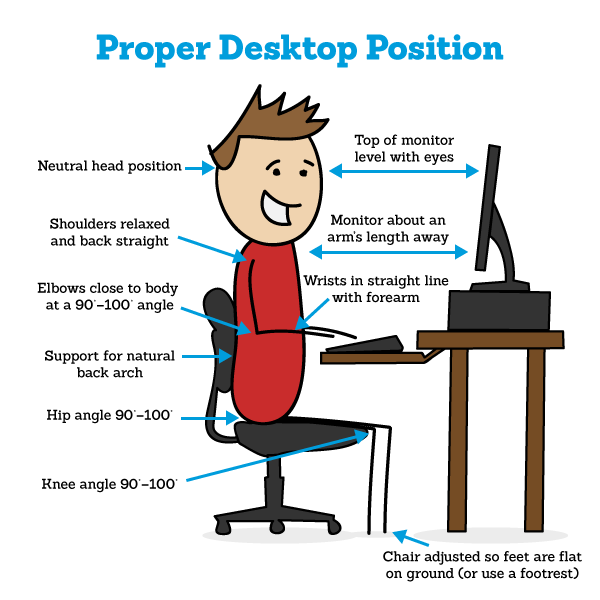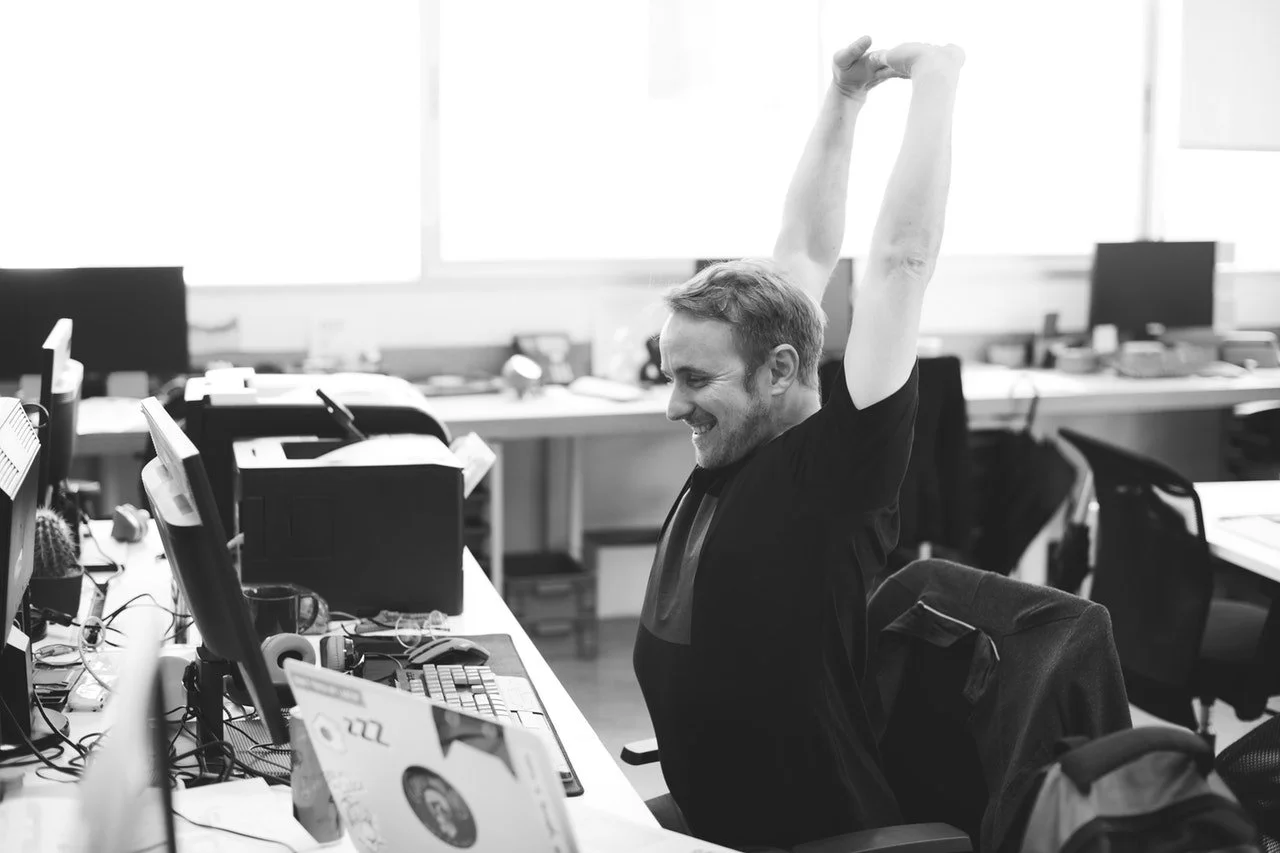How to improve your health at work
By Martin Ebner
Bad posture, stress, headaches, back pain, lethargy, unproductiveness and discontentment. These are just some of the symptoms associated with poor working conditions and bad habits in and around the workplace.
The truth is, if you're sitting slumped over your computer for 8+ hours a day with little to no exercise and living off a vending machine diet of coffee and junk food, it's little surprise that your health and wellbeing is suffering as a result.
Thankfully, there are a few simple things you can do right now to improve the quality of your life not only during office hours but long after you turn off your computer and leave for the day.
Get an ergonomically sound desk setup
Feeling a little humpback of Notre Dame lately? One survey showed that up to half of office workers experience job-related discomfort and up to 16% reported being in extreme pain as a result of a sedentary job and poor posture at their desks. To put these figures in perspective, that's almost double that of manual laborers.
Thankfully, back pain and poor posture needn't be all but a foregone conclusion when working at a desk and can be solved with a few simple changes to your setup. Putting your laptop on a stand or getting a chair that supports your lumbar (lower back) can help correct poor posture which can reduce a large number of issues such as back pain, headaches, dizziness, discomfort and restlessness.
Here's how to properly set up your workspace.
Travel to work on something that doesn't have a petrol engine
Unless you're Elon Musk which of course you're not, take advantage of your journey to work by making it an active commute. If you live within walking distance of your office, walk. If you live within cycling distance, cycle. If you work at sea, swim. Just kidding (sort of!).
An active commute is not only a lovely way to start and end the workday, it's a great way to mentally prepare for the day ahead and switch off at the end of the day without the stress of traffic jams and public transport.
Both time saving and free, it's a great way to boost your health and reduce your risk of cardiovascular disease.
Skip the sugary mid-morning and mid-afternoon snacks
Mars bars and donuts might taste good and seem like a good idea at the time but their high sugar content will do little to energize you. One of the simplest ways to determine whether a food or drink is good is by paying attention to how it makes you feel after you've consumed it. If you feel an overwhelming sense for a siesta following your mid-morning and afternoon snacks, chances are you're choosing the wrong option!
Instead of indulging in sugar-laden snacks, eat a piece of fruit and a handful of nuts. The high fibre content in fruit will give you a slow and steady release of energy and the protein and fat content from the nuts will help keep hunger at bay, limiting the temptation to indulge in sugary treats later in the day.
Related: eat this, not that - delicious food substitutes for weight loss
Take an active lunch break
Just because you're glued to your computer during work hours, doesn't mean you need to be sedentary during your lunch break too. You've got an hour or so, so turn off your computer and make good use of it by getting active.
By standing up, walking around, stretching or if you're a little more enthusiastic, a run or visit to the gym on your lunch break, you can counter the negative effects associated with long periods of inactivity. Also, by taking an active approach to your lunch break, you'll not only return to your desk with more energy, you'll feel de-stressed, refreshed and ready to bash on with the second half of your day.
Mobility and stretching exercises
If you can't make your lunch break active (or even if you can), try to make a point of having a good stretch and/or work on your mobility every 2-3 hours.
If you're worried about what your judgemental lazy-ass colleagues think of you downward dogging next to your desk, don't! You can laugh and point judgment next time they're moaning about being in discomfort.
Note - If you aren't comfortable stretching or doing mobility exercises in front of others, move to a quiet space or stretch in the bathroom cubical.
Take the stairs
So simple yet something very few people choose to do. Next time you're confronted with the daunting task of choosing between the elevator and escalator or the stairs, unless you work on the 50th floor of course, always take the stairs. Any sort of exercise that increases your heart rate is beneficial to your health and wellbeing and as an added bonus, you'll avoid any awkward run-ins with those you prefer not to be locked in an enclosed space with.
Remember it's the small things that can make the biggest difference!
Drink your coffee black
By all means, drink coffee. I actually encourage it. Just don't go overboard or ruin a somewhat healthy beverage by adding copious amount of sugar. A combined caffeine and sugar high followed by a crash will do little to help your energy levels.
Tip - For every cup of coffee, aim to drink at least 2 cups of water. This will help keep you hydrated.
Related: Sugar - is it bad for you? The unsweetened truth
Take regular breaks
Experts say you should take a break from the screen every hour. Clearly, the experts don't have deadlines. However they do have a point! In the real world, try to take a break from the screen every 1-2 hours. Get up, get outside, take a couple breaths of fresh air, get a refreshing drink and when you're ready, return to your desk. The change of scenery can help relieve stress and promote creativity.
Take part in the corporate wellness program
If your company doesn't offer some sort of wellness program, leave! No seriously, leave! They clearly don't care about your wellbeing. If they do have a wellness program in place, get on board. You'll likely learn a lot from the experts about how to improve the quality of your work life.






